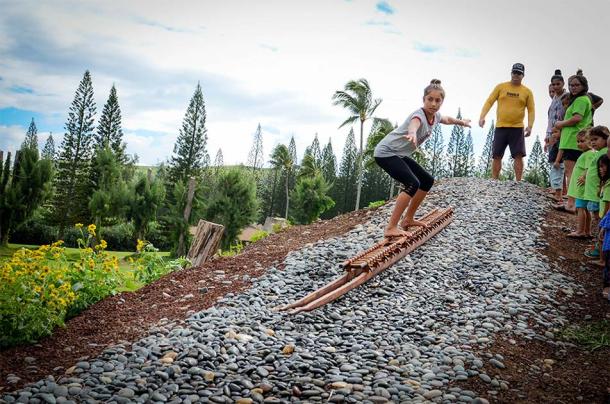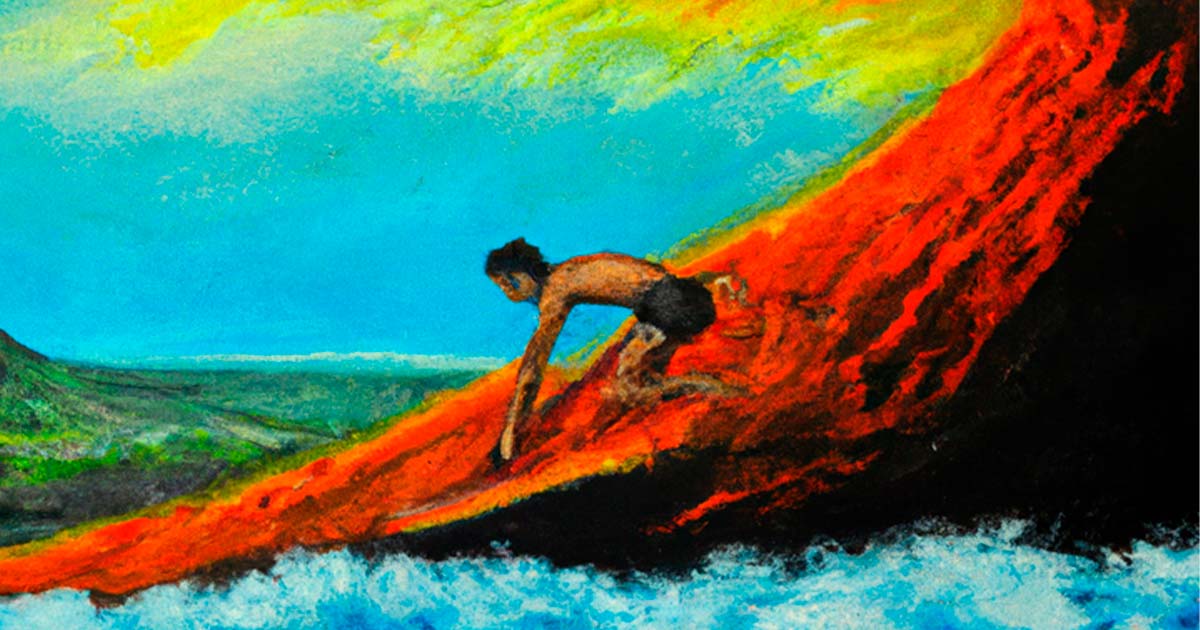Ancient Hawaiians Would Sled Down Lava-Covered Volcanoes
He'e holua lava sledding was, and is, an exhilarating ancient Hawaii pastime. But this was not just an extreme sport enjoyed by natives to the islands. He'e holua was a significant part of Hawaiian culture, whereby riders would slide down lava-covered mountainsides as acts of ritual self-sacrifice to Pele, the Hawaiian volcano goddess.
To find out more, we interviewed Tom “Pohaku” Stone, who has made it his mission to restore, reconstruct and promote the almost-forgotten art of he'e holua lava sledding or mountain surfing, not to be confused with modern-day thrill-seeking activities such as lava boarding or volcano surfing. In doing so, Stone has relied on native oral history, archaeological findings and scant archival records. He has worked tirelessly for decades to recreate authentic papa holua sleds and to rescue kahua holua sledding tracks from oblivion.

Tom Pohaku Stone in traditional clothing with his papa holua sled. (Courtesy of Tom “Pohaku” Stone)
This is no easy feat. For these sledding tracks, once constructed out of lava rock slabs, boulders and stones, covered in native grass, have been lost due to the colonization of Hawaii in the late 18th century and the subsequent erasure of native history on the islands.
Kahua holua track remains are now located on private or government-controlled land, managed by people who have little understanding of their history and who limit access to native groups. One exception is the Keauhou Holua or Kaneaka slide on Hawaii island, once believed to have measured over a mile (1.6 km) long.
It’s a stunning feat of engineering, best described as a lava-gravel path reaching from Hualalai Volcano down to the sea. By reconstructing a section of the lava track, Stone has theorized that it would take 2,500 people working almost six years to build the slide.

A workshop teaching he'e holua lava sledding using a papa holua sled and riding down a reconstructed kahua holua sledding track. (Courtesy of Tom “Pohaku” Stone)
At its core, he'e holua involves riding a specially crafted sled known as papa holua, an approximately 12-feet-long, narrow sled with double runners made from wood. Stone firmly believes that practicing holua is inseparable from its ancient history:
“Holua means ‘to be two together.’ So, from the moment you craft that artifact it’s always in multiples of twos… Even the traditional lashing is in multiples of twos. If you lash it incorrectly it becomes rigid, like people are today. If you lash it properly, it flexes with every little mound that you go over and it won’t break up. There’s a hidden meaning behind all of these things. So holua is a very significant thing. It teaches people why it’s important to carry on the actual traditional ways.”
Stone has theorized that the ritual practice of he'e holua evolved out the need to transport logs from the mountains and to the sea. According to ancient Hawaiian beliefs, Pele, the volcano goddess, and her sister Namakaokahai, the sea goddess, are continually locked in battle as Pele seeks to expand the land. “Ancient Hawaiians honored Pele by sledding into the ocean, symbolically pushing back the waves,” explained Stone.
Top image: Representational image of a person lava sledding in Hawaii. Source: AI generated



















